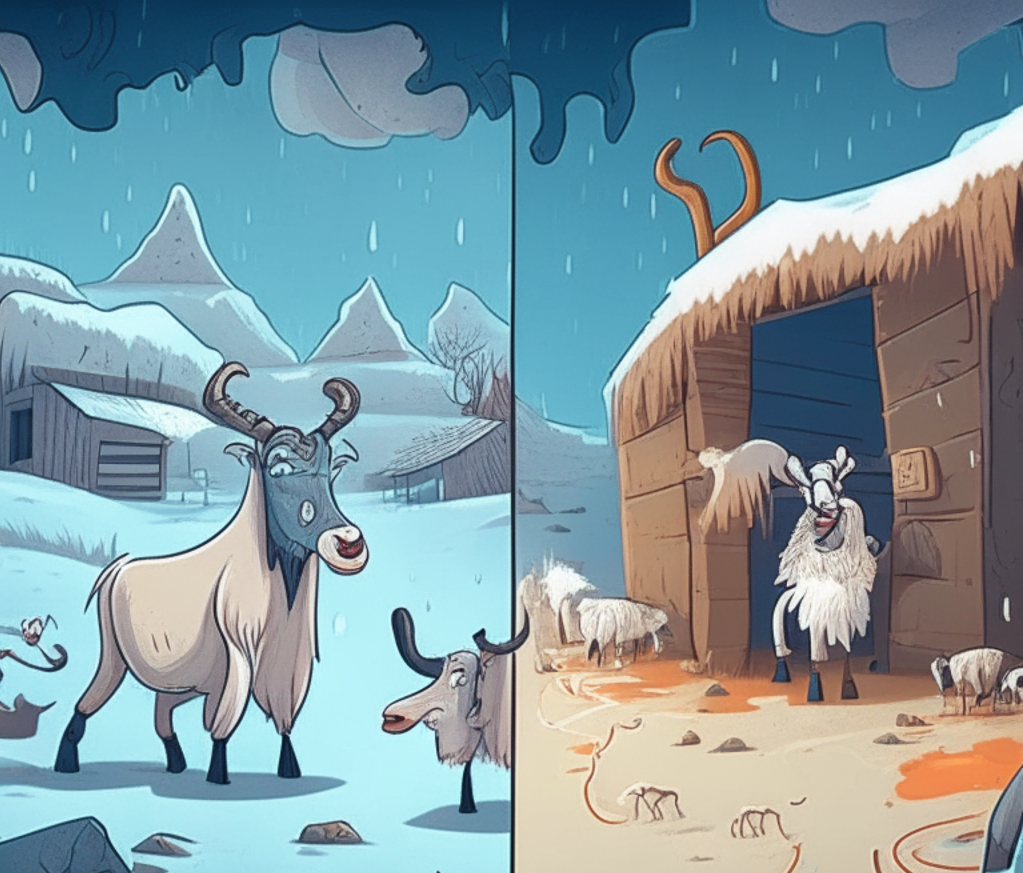Diving into goat farming can be a thrilling journey, and it holds a special place in many cultures worldwide. Just like us, goats react to their surroundings. Changes in weather and climate can touch everything from their health to their happiness, right through to how much they produce. So, knowing how to tweak your goat farming methods to suit different climates is key to making the most of it.
In this article, we’ll take a fun and informative trip around the world, exploring how goat farming thrives in diverse climates and how you can adjust your farming techniques for success.
Understanding the Impacts of Climate
Different goat breeds have been developed in diverse climates and have adaptations to deal with the conditions prevalent in those regions. For instance, the Alpine breed thrives in the cold climates of the European Alps, while the Boer breed from South Africa suits hotter, drier conditions.
Environmental factors such as temperature, humidity, rainfall, and seasonal changes can significantly influence goat health and productivity. Extreme heat may cause heat stress, decreasing feed intake, milk production, and growth rates. Conversely, without adequate shelter and care, very cold temperatures can lead to frostbite, pneumonia, and hypothermia in goats.
Adapting Goat Farming to Various Climates
It is really necessary to adapt goat farming as per the climates to maximise profit.Below are some the guidlines which could be useful.
1. Hot, Arid Climates
Hot, arid climates can pose a significant challenge due to high temperatures and limited water availability. Here are some strategies for successful goat farming in such conditions:
- Choose Heat-Tolerant Breeds: Breeds like the Boer, Kiko, and Spanish goats have been developed in hot climates and are better adapted to withstand heat.
- Provide Ample Water: Water consumption increases in hot climates to help cool the body, so always ensure that your goats have access to plenty of clean, fresh water.
- Offer Shade: Build shelters that provide adequate shade during the hottest parts of the day. Using materials that reflect sunlight can help keep the shelter cool.
- Plan Grazing Times: Schedule grazing times during the early morning and late evening when temperatures are cooler to avoid heat stress.
2. Cold, Temperate Climates
In cold, temperate climates, goats need extra care to stay healthy and productive, especially during winter:
- Select Cold-Hardy Breeds: Breeds like Alpine, Saanen, and Nubian goats are well-suited to colder climates.
- Provide Warm Shelter: Ensure that your goats have a warm, dry, and well-insulated shelter. Bedding with straw can provide extra warmth during the coldest months.
- Supply Extra Calories: In cold weather, goats burn more calories to maintain body heat, so increasing their feed intake helps them stay warm and healthy.
- Monitor for Frostbite: Areas like the ears and tail are susceptible to frostbite. Regularly monitor your goats and provide prompt care if needed.
3. Humid, Tropical Climates
In humid, tropical climates, high temperatures combined with high humidity can lead to various health issues like parasites and heat stress:
- Select Heat and Humidity-Tolerant Breeds: Breeds like the Nigerian Dwarf or LaMancha have shown good adaptability to humid, tropical conditions.
- Implement Parasite Control: Humid climates can harbor a range of parasites. Regular deworming and overall good management practices can help control parasite infestations.
- Ensure Proper Ventilation: In hot and humid climates, good ventilation in the shelter is essential to prevent overheating and facilitate the evaporation of sweat.
Conclusion
Understanding the unique needs and challenges associated with goat farming in different climates can guide you in making informed decisions about breed selection, housing, and care practices.
Whether you are farming goats in a hot, arid region, a cold, temperate climate, or a humid, tropical environment, adapting your farming practices to the specific climatic conditions can greatly enhance the health, productivity, and well-being of your goats.
Remember, the key to successful goat farming lies in adaptability, keen observation, and a willingness to continuously learn and adjust your management practices.
